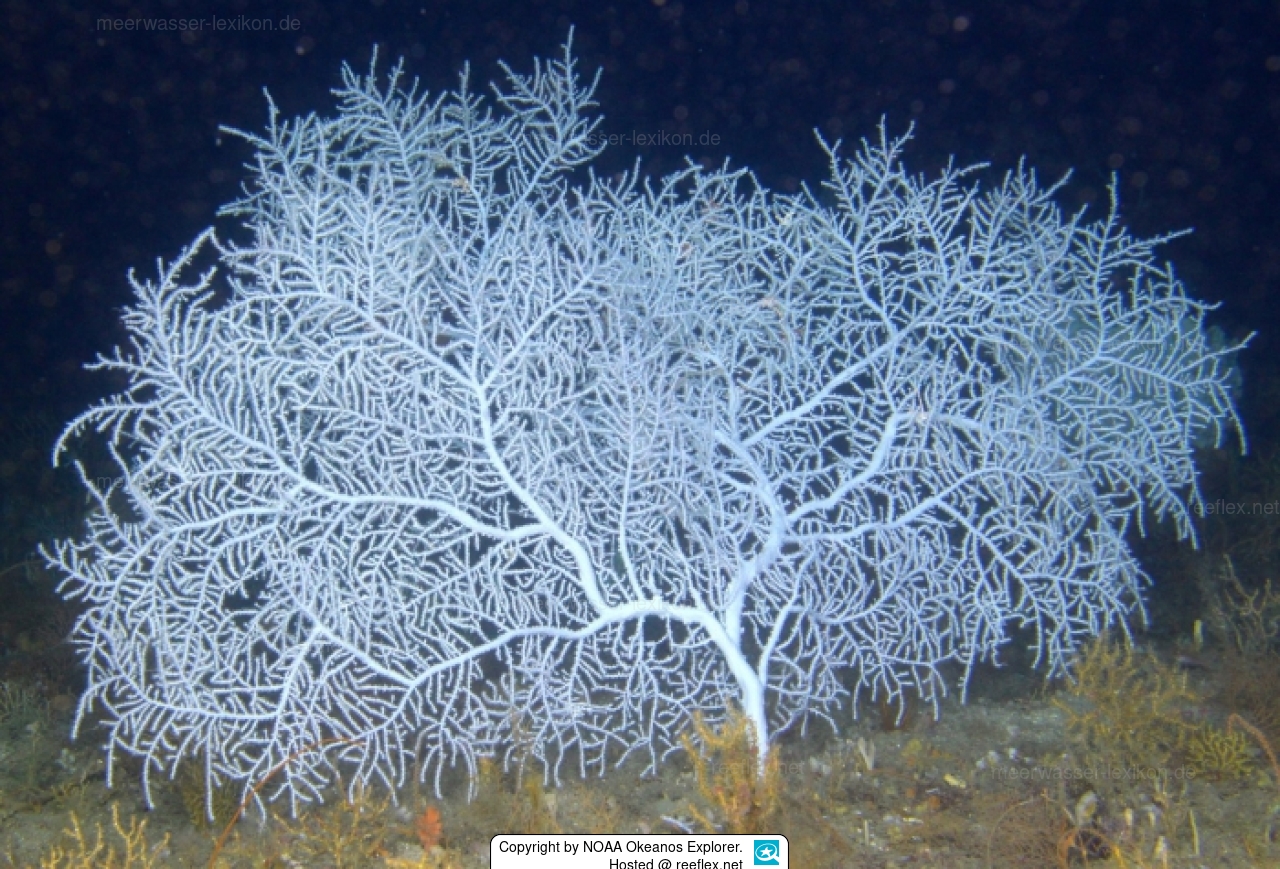Info
In general the coral is rather unknown and can only be observed well with the help of ROV's.
A rather sad news first reached the marine researchers after the explosion of the Deepwater Horizon oil rig in 2010 and the following years.
This was the worst environmental disaster in history, with an estimated 800 million gallons of oil spilling into the Gulf of Mexico.
Everyone knows the photos of the seabirds, fish and mammals that died from the oil, but did the disaster have an impact on deepwater corals?
Yes!
Alabama Alps Reef, Roughtongue Reef, and Yellowtail Reef were located near the well, 60-88 meters below the floating oil spill over several weeks during the DWH oil spill and were treated with dispersants.
The reefs were surveyed by ROV in 2010, 2011, and 2014 and compared to similar surveys conducted one and two decades earlier.
Large gorgonians were present at all sites in moderate abundance, including Swiftia exserta, Hypnogorgia pendula, Thesea spp. and Placogorgia spp.
The condition of gorgonians at sites near the Macondo well deteriorated significantly after the spill. Prior to the spill, injuries were noted in 4-9% of the large gorgonians. After the spill, damage was noted in 38-50% of large gorgonians. Near Macondo, the probability of injury was 10.8 times higher after the spill, while it was unchanged in areas farther away.
The condition of most of the damaged colonies tagged in 2011 continued to deteriorate through 2014.
Background impacts to corals, including fishing activities, fishing residues, and coral predators, were identified during the surveys but do not appear to be responsible for the deterioration of condition at the survey sites near the Macondo well.
The scientific survey on coral degradation can be found in the "Related Links".







 NOAA Okeanos Explorer
NOAA Okeanos Explorer



